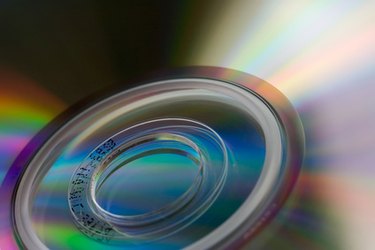
Compact disc-recordable (CD-R) and compact disc-rewritable (CD-RW) are discs used for storage with personal computers. They replaced floppy disks in computing history and changed the media storage from 1.44 megabytes to 650 or 700 megabytes. The main difference between a CD-R and a CD-RW is that the CD-R can only be recorded to once, while a CD-RW can be recorded to multiple times, like a hard drive. However, there are some other differences.
Multiple Rewrite
Video of the Day
A CD-RW can be recorded to multiple times because of more sensitive laser optics.
Video of the Day
For some applications, the user may not want the information to be erasable. Being able to erase the data, either by mistake or intentionally, could be a disaster in these situations.
Cost and Speed
A CD-RW costs more than a CD-R, and it takes longer to read and write information on a CD-RW. However, the gap in price between CD-R and CD-RW is getting smaller all the time. Most people don't end up reusing their CDs (for instance, if you are using them for music CDs) so the extra time and money spent on CD-RW is wasted. But, if you take care of the CDs, don't mind waiting the bit of extra time and don't mind erasing the old information for entirely new data, a CD-RW can save you money with their re-usability.
Compatibility
Another thing to consider is the difference in compatibility between a CD-R and CD-RW. Some CD drives are not able to burn, while some drives can burn only CD-R and not CD-RW. This is slowly becoming obsolete as most modern drives are now being able to not only burn, but to burn both types. Also, CD-R seems to work better with heavily used media, such as audio CDs. If you can, before buying, borrow a CD-R or CD-RW from a friend and test it on your CD player to make sure it works.